literal speech balloon
I was glad to catch Bryan Talbot in conversation this week before we appeared on stage, because I know we don't see eye to eye on a lot of aesthetic and historical matters, and I wanted to get them out of the way in case we embarrassed ourselves publicly. So I found myself in an interesting technical discussion which can be nicely extended into an essay here. Bryan criticised my 'fumetti' sequence in The Fate of the Artist, in which hayley campbell is interviewed about the disappearance of her beloved father. Here is the first page of it. Ignore the obvious goof in panel 1 of attributing the interviewer's question to the subject by encircling it in a lasso resembling, for the sake of this discussion, a speech balloon. 
The seven page hayley sequence is intended of course to evoke the 'fumetti' idiom, the English language name for a style of comic strip that is said to have originated in Italy, in which photographs take the place of drawings. Here is an attractive example of the style (Check here for the whole work in 36 panels, by Charlie Beck)
Bryan said to me that he feels that the hayley passage fails because he doesn't believe the character is actually speaking. I said, what, you mean the thought processes are not convincingly those of a nineteen year old girl? Bryan replied, no, I mean the face in the picture doesn't correspond to what is being said in the balloon, and the mouth isn't even open. Ah. the conversation didn't get much further because I was taken aback; it was something I hadn't even thought to prepare a defence for. I do say clearly that it's a transcript of a taped interview (entirely a fiction), and I've taken pains (as has Mick Evans, who brought the parts together at the design stage) to make it look roughly cut and glued from a typeset document; it's NOT direct speech. There is no sound.
I worked hard to avoid the kind of histrionics you see in the second example above, in which skill and craft are evident but inauthenticity is the initial impression. It has a feeling of being staged (though note that Beck arrived at the same conclusion I did, that a series of open mouths on one character looks too wrong). Talbot's seven page episode of fumetti in his Alice in Sunderland is so something else that it would seem eccentric to make a comparison. It's perfectly appropriate to his purpose.
So let me stick to the subject of the word balloon, which is the real issue here, and it dovetails with an earlier discussion I had with Bryan. In the following example, do we believe that the 2,000 year old bust of Caesar is LITERALLY SPEAKING the words from Shakespeare's Julius Caesar?
Or would we say: no, it's not direct speech but a quote contained in a balloon of attribution which combines with the image to make a graphic construct at the same time more direct and more complex than the sum of the elements. Note that in an earlier version I had the quote "I came, I saw, I conquered," but ditched it as the words looked too simply like words that ought to go with the face.
The earlier discussion (with Bryan) concerned my assertion that we should not corral willy nilly under the rubric of 'comics' old works that appear to have the same formal elements, because there is a tendency to misinterpret their function, for example the word balloon. The most intelligent view on the subject is the 22 page essay, On labels, loops and bubbles by Thierry Smolderen in Comic Art #8. He writes:
Throughout the 17th, 18th and 19th centuries, labels consistently appeared in political satires. Because their function seems, at first glance, similar to that of the 20th century device, the modern reader is tempted to read them as regular speech balloons, ignoring the fact that there isn't anything remotely similar between a 20th century comic strip and a 17th century allegory...
In an allegorical picture, each character (or, sometimes, object) has both a literal and a metaphorical meaning. On the literal level, the picture can mean just about anything - or make no sense at all; the 'tableau' is merely a hieroglyph; its external appearance needs not be more plausible or coherent than the garbled letters of a cipher. Thanks to this freedom, the satirists were allowed to combine topical interests with any wild fancy of their imagination...
In such a context, the reason why the labels cannot be read in the same way as our modern speech balloons becomes clearer. Nothing is alive or natural in allegorical constructs: like rebus riddles, they exist in a timeless and spaceless dimension, in which no living sound will ever travel. How could metaphors freely dialogue between themselves like characters in a comic strip? Any verbal exchange included in an allegorical picture could only be the metaphor for something else.

(example from an 1860 Currier and Ives print used in the article)
I think the real difference between Bryan and me is that he likes and believes in 'comics,' (see his three page history of British comics in the Guardian last week) and imagines I do also, but I don't. It is a medium that becomes more conservative and moribund every year. All the theories are designed to shackle it to a metronome of measured time analogous to the cinematic. Give me an art that doesn't need to constantly resubmit its claim to the respect that readers award to the 'realistic,' which must dress the facile in verisimilitude. I want a truth that has no need to play games of make-believe.
p.s. Of course, on Bryan's behalf I should say that in order to do what they do, artists need to be single minded to the point of thinking everybody must do things their way. For example I remember Pekar criticising Spiegelman for using animals in Maus. And God knows what innocent Charlie Beck thinks of me for dragging him into my argument. Check his page and lighten my guilt.
pps. re talking things that are not literally talking, see my post on Rome's 'talking statues'.
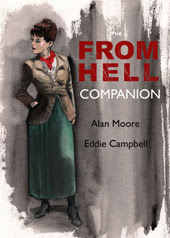


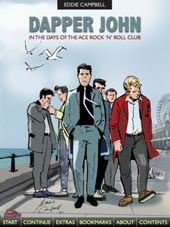
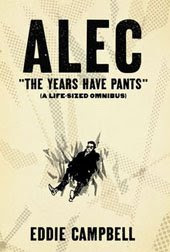
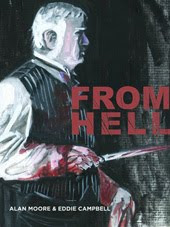
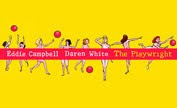
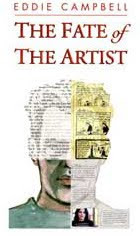
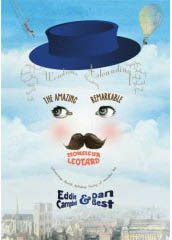





14 Comments:
"Give me an art that doesn't need to constantly resubmit its claim to the respect that readers award to the 'realistic,' which must dress the facile in verisimilitude. I want a truth that has no need to play games of make-believe."
Brilliant. Loud cheers.
N
I actually really love the Hayley interludes in Fate.
Incidentally, here's a wiki entry for a song you'd be familiar with, and might like to share with folks who insist on rigidifying definitions of art... ;}P>
For those that didn't see Bryan's Guardian pages, Rich Johnston has them here.
No hay banda.
It is all a tape-recording.
drjon
Ah! Mozart's Lick my arse . I do of course have a recorded version of it.
I'm surprised Bryan thinks your panels don't work since they're employing the same subtlety he demostrated himself in One Bad Rat which used photo reference for all the characters. There were plenty of panels there which had characters with closed mouths talking.
"Histrionics" is the key since that's what you wish to avoid, isn't it? Like the unnatural emoting in early silent cinema or the over-emphasis in written fiction where the author has to tell you how a sentence was delivered every time a character speaks.
"I think you're being a bit histrionic," Harry announced.
Re: Hayley's t-shirt. Jon Wozencroft writes about the cultural significance of the sleeve of Unknown Pleasures for the Tate magazine:
http://www.tate.org.uk/tateetc/issue10/outoftheblue.htm
JD are everywhere just now, what with two films coming out and all the albums being reissued. One of my incoming projects is design for a book based on manager Rob Gretton's notebooks.
I think the real difference between Bryan and me is that he likes and believes in 'comics,' (see his three page history of British comics in the Guardian last week) and imagines I do also, but I don't.
That may be a difference, even a key difference, but I don't think that it's the only difference here: since I, like Bryan, like & believe in comics... but also think that your Haley sequences in "fate of the artist" work very well. In part because they aren't histrionic at all, and therefore work much better than a lot of Fumetti (although I agree that Bryan's sequences work for what he does with them... I liked his book a lot, and in fact just posted a rave review of his book on my blog). And I think that you're right that a series of open mouths in photographs doesn't work. But of course in a lot of drawn comics (if you'll forgive me the phrase) the characters don't have open mouths when they're speaking either.
It seems to me that the "mouth not open" criticism simply gets wrong both the way that time works in (you'll pardon the expression) comics and more broadly the way representation works in art.
The issue with the former: I'll risk Eddie's wrath and cite Scott McCloud: time in comics is not simply a series of moments (I think that his chapter in UC on this speaks against the idea that time in comics is "[shackled] a metronome of measured time analogous to the cinematic"). This is clear, in part, because of the speech: it takes a period of time -- seconds, say -- to speak the contents of a word balloon: the image itself takes but a moment (particularly, perhaps, in fumetti... although what if you showed the blurred motion of moving object? Wouldn't that imply motion in a still image in a comparable way to many drawn comics?). So to say "the mouth isn't open" is odd, since of course there is necessarily a disjunction between the speech and the image: they can't possibly take an identical length of time.
Which brings us to the latter point: I would argue that both the images and the words are pointing towards a represented object, but neither represent it directly. Both are shadows of something not shown: but they're not the same shadows, from the same angle.
To overstate the case slightly, it seems that Bryan's criticism is like saying that one didn't believe a scene in a musical works because in real life the characters wouldn't be singing at that moment.
...in order to do what they do, artists need to be single minded to the point of thinking everybody must do things their way.
This is, I suspect, a key point. Certainly an important one in interpreting the critical work of any working artist... even, dare I say it, our esteemed host, Mr. Campbell.
Cheers,
SF
PS: Personally, I think "fumetti" is a terrible term for the object under discussion, since (if my google-fu is working) in Italian "fumetti" just means "comics", whether drawn or photographed. I would propose "photography-based comics", or "photo-comics", myself.
There's something about fumetti (fotonovel, whatever you wish to call them) stuff that completely ruins a book for me. As soon as I see them...I stop looking. I don't read them. I didn't even read the ones in FATE. Why? Hell if I know. I just can't stand the form.
Stephen,
hi. I originally cited 'Eisnerian' and 'McCloudian' before the word 'theories' but took them out. I thought it was too many fights to start all at one time. But as you say, they both chain the whole process to a principle of literalness with regard to the passing of time. I also wanted to include the page from Pekar which consisted of a figure of himself drawn by Crumb under a huge diatribe that would be rejected as unfeasible by the well known Eiserian rule.
I believe the Italians say 'fotonovel'. I like fumetti. Misused words are a natural development in language. The trouble only arises when people try to rationalise them. lik 'comics' and 'graphic novel'.
I'm about half-way through reading ALICE IN SUNDERLAND, and I think I would enjoy it a lot more if I hadn't read THE BIRTH CAUL and SNAKES AND LADDERS. I know that Talbot is aiming for something different, but there are definite similarities, and as I read I kept thinking that Talbot was taking a timid step back towards formal "comics" from what you did with Alan's lecture/performances. I don't spend a lot of time with the "graphic novel" theories crowds, so this post helped clarify a lot for me. I guess I thought Talbot's rigid formalism seemed at odds with such an otherwise ambitious book. I now get how it's part and parcel with his particular ambition, and will probably have to content myself with digging ONE BAD RAT and leave it at that.
-J.
JJ sez
Forget the mouth open / closed debate.
Hayley is just soooooo beutiful.
It's true that your page is going a different route than a comic or fumetti, so it need not work as Bryan wants it. After all, it has the speaker attribution and it's outside the panel. But you drew the balloons, which invited him to look it at it that way. Interestingly, it's just the tail that makes it that way- if it had an arrow at the end pointing to Hayley or weren't there at all, the reader wouldn't expect it to be more like a comics panel.
As for balloons synching up with speaking characters, I've found that I also tend to want mouths open when there's a large amount of text, but it can all often hinge on what the very last thing said is. If the last sentence is short, the closed mouth usually works fine. But if it's long or is an exclamation, the mouth has to open.
An interesting point about characters with open mouths "looks wrong" - for someone who read Asian comics before American and European ones, at first closed mouths looked wrong. It would be an interesting study to compare how these different systems evolved.
Entering this discussion very late in the day, just to add this:
Stephen said, "Personally, I think "fumetti" is a terrible term for the object under discussion, since (if my google-fu is working) in Italian "fumetti" just means "comics", whether drawn or photographed. I would propose "photography-based comics", or "photo-comics", myself."
And I partly agree; fumetti does simply mean comics, the name deriving appropriately enough from the literal meaning of the word, 'little (puffs of) smoke'-- i.e. the name refers to the speech and thought balloons.
But the prevalent Italian name for the photographic strips is (or was, back when I first discovered these things) foto-fumetti (or fotofumetti) which is a term I really like and would be very happy to see survive.
This is something of a bugbear of mine, since fumetti is now so very widely used now in the English-speaking world to mean 'foto-fumetti'... in fact so widely that any attempt to argue for or retrieve its 'real' meaning is probably doomed to failure.
Unless creative types with a bit of clout get into the fray...
I'm looking at you, Mr Campbell!
:O)
Post a Comment
Subscribe to Post Comments [Atom]
<< Home